Hey there! If you’ve ever wondered how to sprinkle a little more joy, connection, and vitality into the golden years, you’re in the right spot. I’m about to share some low‑key, high‑impact social activities for seniors that feel less like a checklist and more like a good chat over coffee. Grab a comfy seat, and let’s explore why getting together matters, what kinds of fun are out there, and how you can jump in (or even start something new) without any fuss.
Why Social Matters
First off, let’s be real: loneliness can creep up like a quiet fog, and it’s not just a mood issue. Studies from the National Institute on Aging show that regular social engagement can lower blood‑pressure, improve balance, and even shave years off the risk of dementia. Think of it as a daily multivitamin for the brain and heart—only more enjoyable.
Physical Health Pay‑off
When you move to music, shuffle a deck of cards, or simply walk to a community garden, you’re giving your muscles a gentle reminder to stay active. Even a light 30‑minute walk with friends can boost circulation, tighten muscles, and improve joint flexibility. according to a recent roundup of 100+ unique activities for seniors, participants reported fewer falls after six months of regular group outings.
Mental & Emotional Boost
Chatting, laughing, and sharing stories fires up neurons. Engaging conversations are like mental yoga—stretching cognitive muscles while easing stress. A 2023 meta‑analysis found that seniors who attend weekly social clubs have 30 % lower depression scores compared with those who stay home.
Potential Risks & How to Guard Against Them
Anything too intense can backfire. Over‑exertion, crowded venues that strain hearing, or activities that feel “forced” can cause fatigue or anxiety. The trick is balance: pick events that match energy levels, ensure venues are accessible, and stay open to saying “no” if something feels off. Below is a quick risk‑vs‑reward snapshot.
| Risk | Mitigation | Reward |
|---|---|---|
| Over‑exertion | Start with short, low‑impact sessions; warm‑up first. | Improved stamina & confidence. |
| Hearing/vision challenges | Choose venues with good acoustics; use captioned videos. | Clear communication, deeper connections. |
| Transportation barriers | Use community shuttles or car‑pool groups. | Consistent attendance, broadened network. |
Club‑Style Gatherings
There’s something magical about a regular meet‑up where familiar faces become family. Below are the kinds of senior social clubs that pop up in towns across North America.
Line‑Dance Clubs
Picture this: a sunny hall, upbeat country tunes, and a room full of people gliding across the floor in perfect sync. The Seniors Hub in Vancouver hosts a line‑dance event that draws over 60 participants, including a 100‑year‑old celebrating her centennial with a mango cake. No prior dance experience? No problem—volunteers guide every step, and the social focus means laughter beats perfection.
Dance Parties & Silver Sneakers
If you love a bit of sparkle, the KANE Senior Council’s Senior Dance Parties attract 400‑plus guests. A study from the U.S. National Library of Medicine notes that dancing “significantly improves muscular strength, balance, and functional fitness.” Plus, the social buzz of swapping stories over a snack bar feels like a mini‑festival every few months.
Billiards & Game Nights
For those who prefer a more relaxed vibe, the Seniors Hub’s billiards nights are a hit. Cue sticks become conversation starters, and the low‑impact nature means you can play well into your 80s.
Creative & Artistic Fun
Creativity isn’t just for the young—if anything, seasoned hands bring depth to art that fresh eyes can’t match.
Drumming Circles
Remember that primal thrill of marching to a drumbeat? Memory Lane Therapy’s drumming circle lets seniors grab rubber balls, sticks, and buckets, then unleash rhythms that echo camaraderie. The sessions start with gentle warm‑ups, last about 45 minutes, and end with a shared sense of accomplishment—and maybe a few sore wrists (the good kind!).
Arts & Crafts Workshops
From “paint‑and‑sip” afternoons to memory collages made from old photographs, arts and crafts are versatile. HuddleTeams shares 18 ideas, like DIY flower arrangements and quilting circles, that are easy to set up with minimal supplies. The tactile nature of cutting, gluing, or stitching also offers fine‑motor benefits.
Writing & Storytelling Circles
Gather a group, a few prompts, and let stories flow. Many senior centers run “Life‑Story” workshops where participants record memoirs. It’s therapeutic, preserves family history, and strengthens listening skills across generations.
Outdoors & Light Exercise
Fresh air does wonders for mood and joints alike. Here’s how to turn a simple walk into a mini‑adventure.
Scavenger Walks & Geocaching
Combine a stroll with a treasure hunt. Lovebirds can spot local birds, while tech‑savvy folks use a phone app for geocaching. LoveToKnow recommends adding a bird‑watching checklist; the extra focus makes the walk feel purposeful and less like a chore.
Gardening Clubs
Nothing says “growth” like planting a seed together. Community gardens let seniors tend to raised beds, share tomatoes, and swap gardening tips. According to SeniorCenters.com, gardening clubs improve mobility and provide a natural setting for social interaction.
Water Activities
Swimming or aqua‑aerobics provides resistance training without joint strain. Silver Sneakers often partners with local pools, offering low‑impact classes that feel more like a splash party than a gym workout.
Games & Light Competition
If a hint of friendly rivalry fires you up, there are plenty of low‑key competitions.
Senior Olympics & Local Leagues
The National Senior Games Association runs regional “Senior Olympics” where participants can try track events, bowling, or even chess. It’s a confidence booster and a great excuse to dress up in a team shirt.
Board & Card Games
Classic games like Bridge, Scrabble, or even simplified versions of poker can be adapted for visual or hearing impairments. The key is to keep rules clear, use large‑print cards, and encourage applause for every win.
Choosing the Right Fit
Everyone’s preferences, health status, and schedule differ. Below is a quick checklist you can print (or jot down) to match activities with your lifestyle.
Self‑Assessment Checklist
- Mobility: Do you need wheelchair‑friendly spaces? Look for venues with ramps and wide aisles.
- Transportation: Is a community shuttle or car‑pool available?
- Budget: Are there free events or “pay‑what‑you‑can” options?
- Interests: Do you love music, art, nature, or a bit of everything?
- Health goals: Want cardio, balance, or cognitive stimulation?
Matching Activity to Goal
Want a cardio boost? Try line dancing or a walking group. Need brain exercise? Join a drumming circle or a storytelling workshop. Craving social connection without much movement? A bingo night or board‑game circle does the trick.
Getting Started – Practical Steps
Finding Local Opportunities
Start with a simple Google search: “senior social clubs your city.” Check municipal websites, libraries, and senior‑center bulletin boards. The Seniors Hub’s event calendar is a goldmine for free gatherings—just type “Seniors Hub events” into your browser.
Starting Your Own Group
Feel inspired to create something fresh? Here’s a quick planner:
- Venue: Community rooms, churches, or even a backyard.
- Supplies: Gather low‑cost items—cards, a portable speaker, or a few drums.
- Promotion: Flyers at pharmacies, senior centers, and local coffee shops.
- Safety Brief: Warm‑up, hydration, and a first‑aid kit on hand.
Volunteer groups love to help; reach out to local colleges or high schools for student volunteers willing to assist.
Overcoming Common Barriers
Mobility & Transportation
Many towns offer senior shuttles that are wheelchair accessible. Bonsor 55+ Society’s centennial line‑dance event highlighted how a coordinated volunteer driver pool made it easy for 65 guests, including a 100‑year‑old, to attend comfortably.
Sensory Challenges
If hearing is an issue, ask organizers to provide a microphone or use hearing‑assist devices. For visual impairments, request large‑print flyers or high‑contrast signage. A simple “bright‑colored tablecloth” can make a huge difference.
Social Anxiety & Language Barriers
Ice‑breaker games—like “Two Truths and a Lie”—help soften nerves. Multilingual volunteers can translate basic greetings, and many clubs now offer bilingual sessions for diverse neighborhoods.
Financial Constraints
Look for “pay‑what‑you‑can” arts workshops or community‑funded dance nights. Some libraries partner with local businesses to sponsor supplies, so you often don’t have to spend a dime.
Safety & Risk Management
Physical Safety Basics
Every activity should start with a gentle warm‑up and end with a cool‑down stretch. Keep water bottles handy, and make sure the space is free of tripping hazards. For drumming circles, limit sessions to 45 minutes and provide sturdy stools.
Health Precautions
In today’s world, it’s wise to have a basic infection‑control plan: hand sanitizer stations, optional masks for indoor events, and regular cleaning of shared equipment.
Wrap‑Up
So what’s the bottom line? Social activities are a powerful prescription—no side effects, just genuine joy. Whether you’re tapping your toes in a line‑dance, crafting a memory collage, or strolling through a garden, each connection adds a bright thread to the tapestry of later life. Pick one idea that sparks your curiosity, invite a friend, and give it a try. You might discover a new passion, a new circle of friends, or simply a brighter day.
Got an experience you’d love to share? Maybe you’ve stumbled upon a hidden local club or organized a surprise birthday dance party for a loved one. Drop a comment below—I’m excited to hear your stories, and who knows, your tip might become someone else’s next adventure!

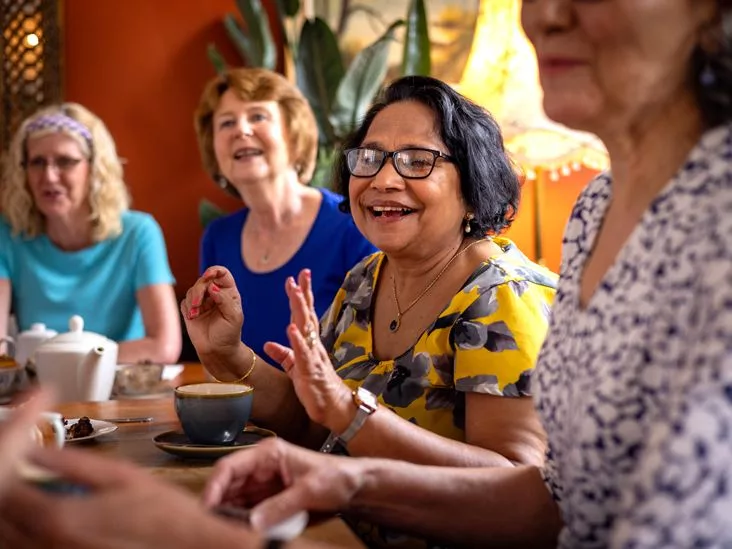



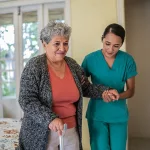
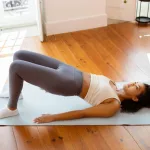
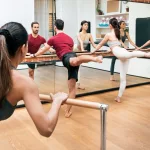




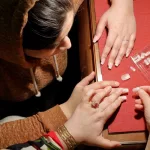

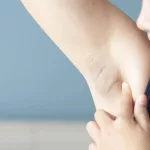


Leave a Reply
You must be logged in to post a comment.